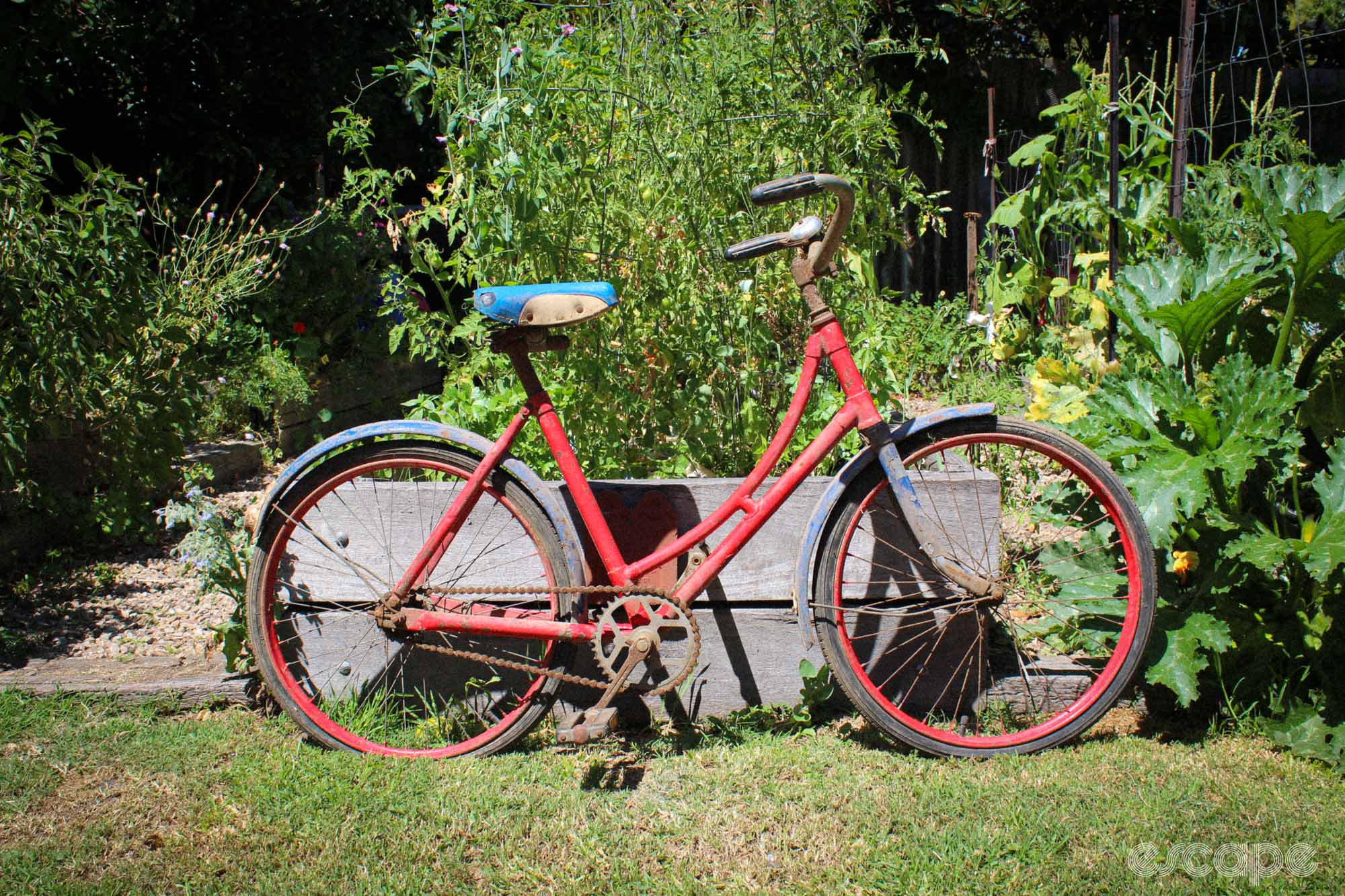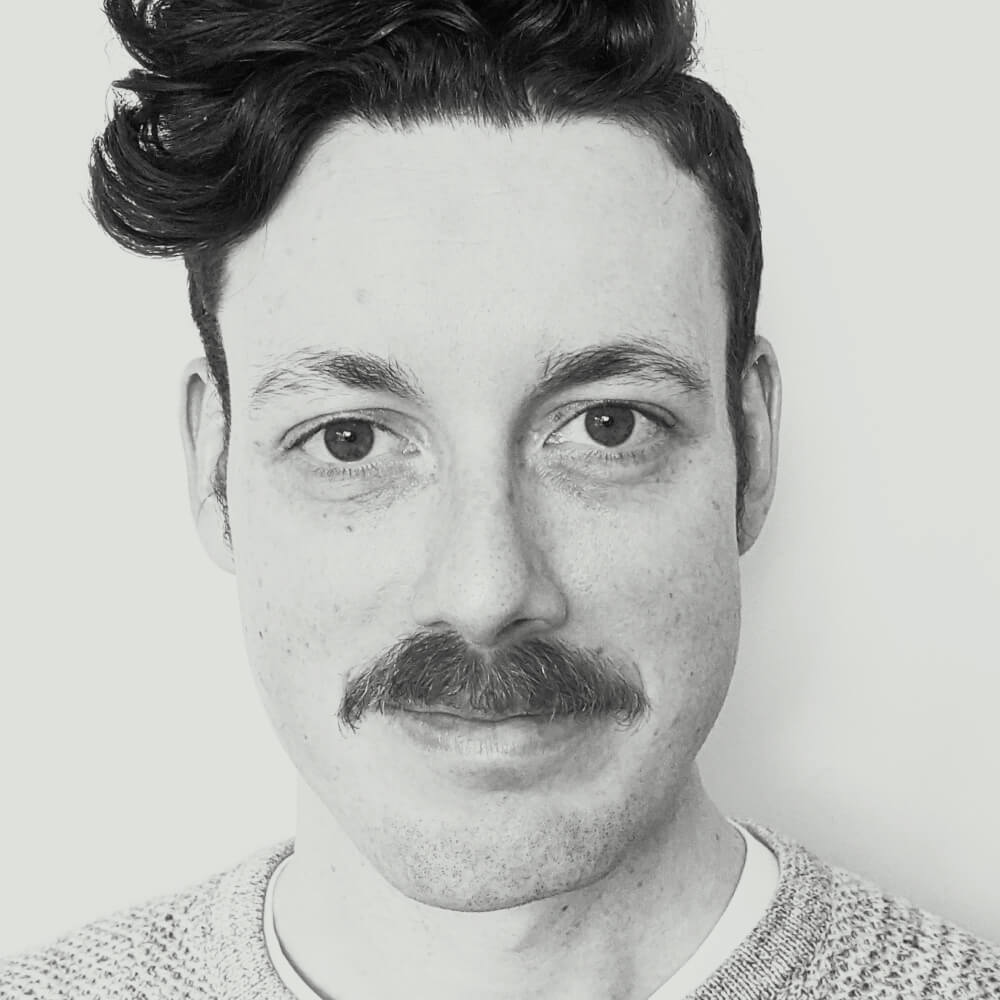There are certain memories that stick with you from childhood, and this isn’t one I’m proud of. It stretches back to grade one or two – I’d have been six or seven years old – and a conversation with a couple of cooler kids than I was. They had shiny early ‘90s BMXes or mountain bikes. I had an old hand-me-down, last ridden by my brother, painted by my dad in red and blue. No gears – just a back-pedal brake, a pair of blue mudguards, a creaky faux-leather saddle. I didn’t think much of it then, and when the cool kids challenged me to a race around the nearby park I tried to talk up this bike that I quietly, in a six-year-old way, kinda resented. “It’s Italian,” I’d protest. “It’s vintage.” Half true.
As children do, I grew, and soon enough the old red bike went back into storage under the house. For Christmas one year I got a new bike, properly new, my first ever: a steel-framed Giant Upland in glistening blue, with gears and everything. I cried when I took it into a shop one day, years later, and they told me that the frame was bent from a head-on collision I didn’t remember having and that I needed a new one. Dozens more bikes have followed since, but that twinging sense of shame from the old red bike – and that sense of pride and connection from the new blue bike – have stuck with me over the decades.
Maybe I just needed to get to know the red bike better. This year, 30 years or so later, I feel like I finally did.

I guess I always had some distant awareness of the fact that the red bike was a part of family history stretching further back than my period of guardianship, but I was too caught up in the everyday to really engage with that story. There was Life Stuff to deal with: big things like relationships, work, family, as well as all the little things we get hung up on, thinking they’re big things. Covid-19 was a kind of a reset, though. More time at home with the kids. A more poignant relationship with my older relatives, particularly my Grandma over in South Australia, who I used to see a couple of times a year but who I now hadn’t seen for two years. And the whole time, growing increasingly dusty and rusty, the red bike and the secrets it held lay waiting under my parents’ floorboards.
In January, we – my wife and daughters and I – flew over to Adelaide, wedged a bike bag containing a more modern bike into the back of a hire car, and drove down the coast to Sellicks Beach. It’s one of my favourite places, and not just because my Grandma lives there. The coastline of that part of the Fleurieu Peninsula stretches in a graceful arc, dipping in to little bays along the way – some of which you can access by car, and some of which are just yours to walk into, with prehistoric red cliffs and mysterious gullies at your shoulder. From Sellicks you can see the dirt road that dives into Myponga Beach at the point, a pinky-red scar in the sunburnt hills, and the sea’s uninterrupted stretch to South Africa.
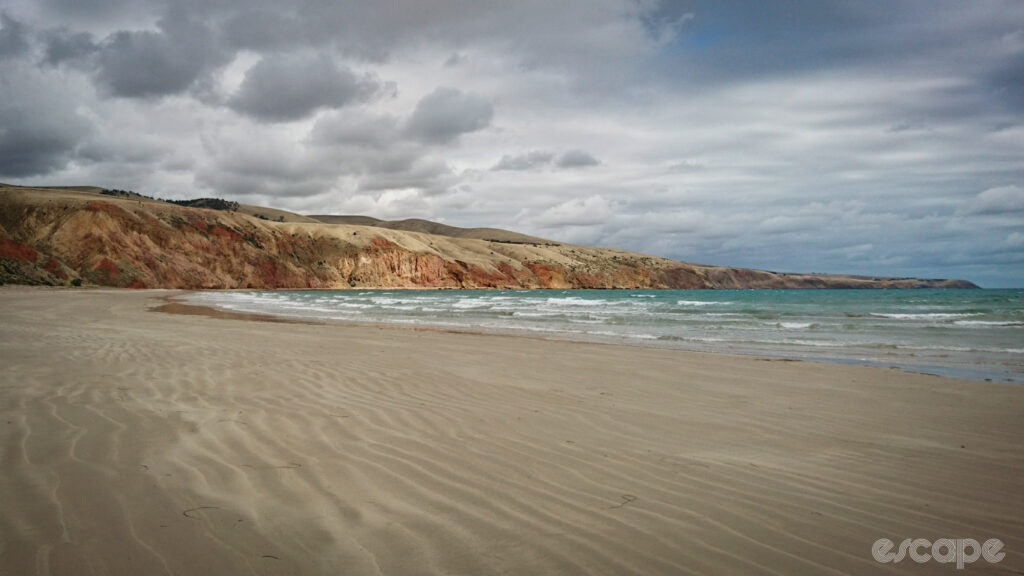
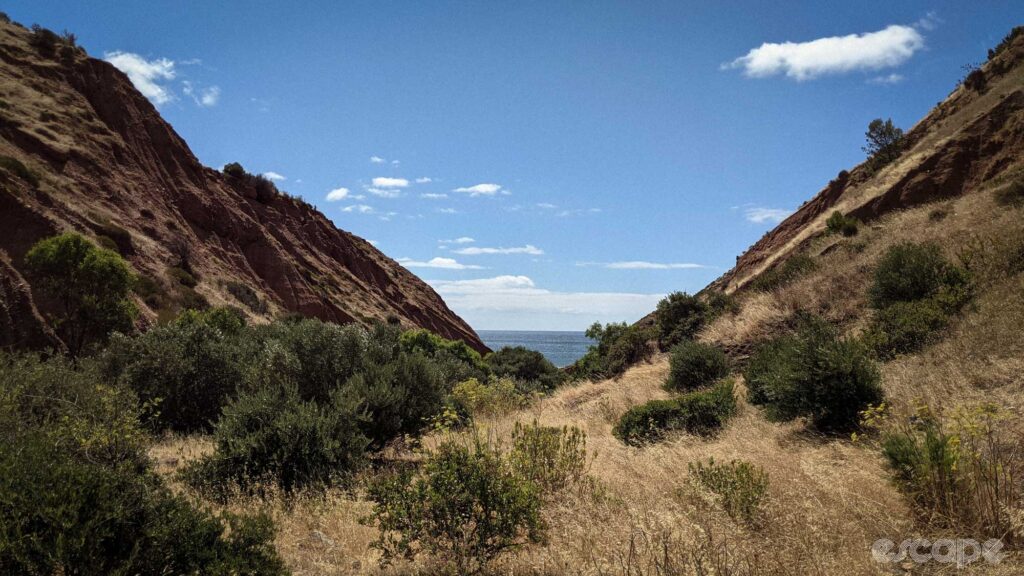
We normally stay with Grandma, but this year was different. Since last time we were there, my uncle had died – simultaneously too young, but older than expected – and his run-down house up the hill had been brought back to life by my parents in the months that followed. I’m not a spiritual person, but I thought of Stephen a lot while we were there – both the life he led and the way he left it – and would catch myself remembering interactions over the years. The time he brought curry around when I was recovering from major surgery, even though he was kind of a black sheep by that point, because he thought I could do with something “more tasty” than hospital food; the last time I saw him a decade later, knowing that it was going to be the last time, the heave of his ribs as I hugged him. The ways that we show love when we lack the vocabulary to express it. More family history to ponder on my solo gravel rides up in the hills over the town.
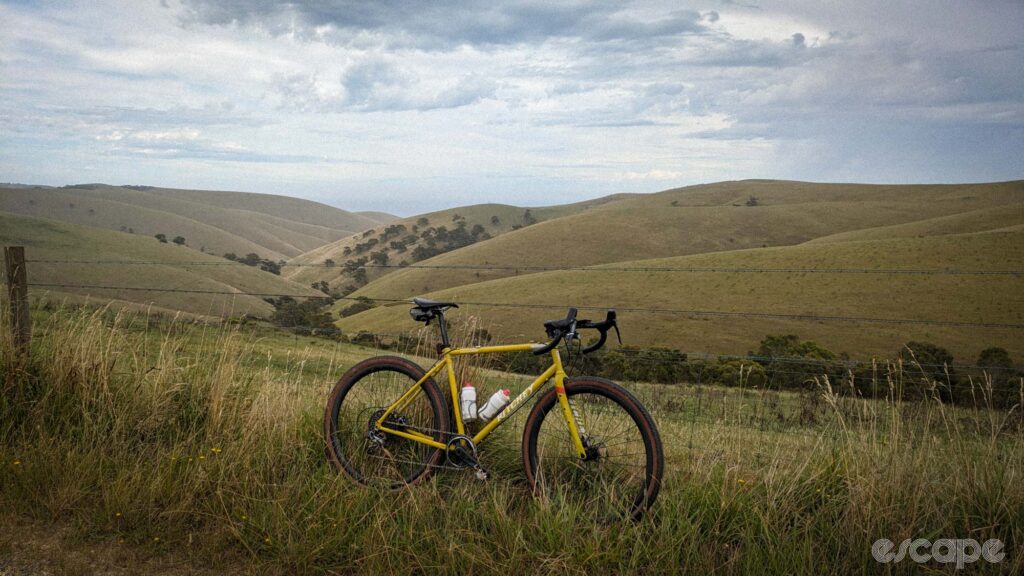
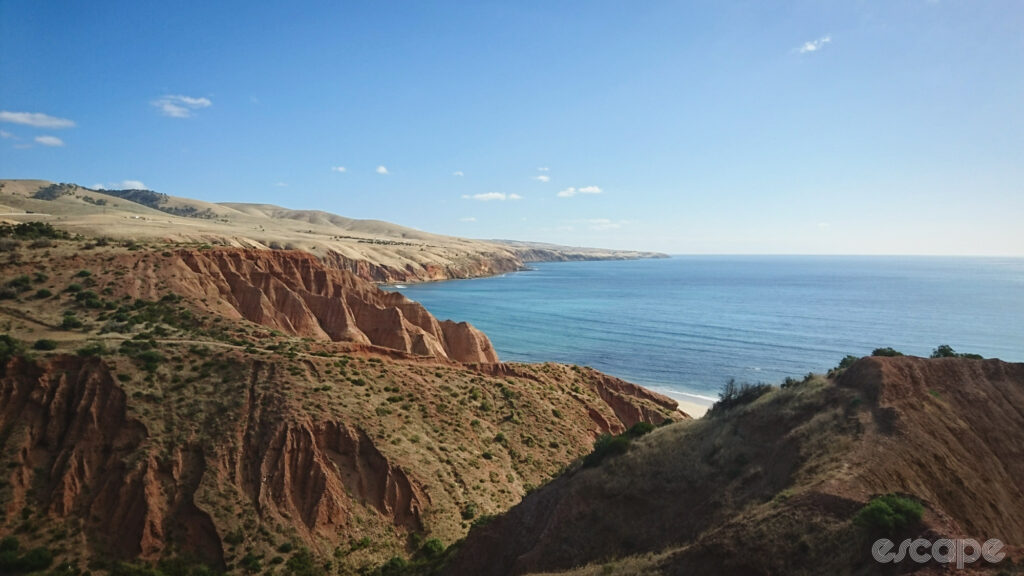
Our week passed in a sundazed blur of beach and afternoon sleeps. As increasingly seems the case, time felt like it was running out. I feel that sand running through the hourglass all the time; time running out in my work day to get things done, time running out to be the most present father I can for my kids, time running out on their childhood, their innocence. Sometimes I wonder about the time running out on my own life: whether I have already lived more than I will again. I think about that finality with Grandma too, who at 88 years old is starting to slow down, and then I push the discomfort of the thought away because if I dwell on it, it sits too heavy on my chest to bear.
One afternoon we sat in the shade of my Grandma’s deck, her chooks pecking happily around our feet, and our conversation turned to bikes – specifically that old red bike. The kids were overtired and in the midst of losing patience for leisurely conversation, so I asked if Grandma could tell me the story the next afternoon. Time ran out (of course it did) in a rush of house-cleaning before our departure, and then we were on a flight back home. Guilty about my failure to prioritise the important things, I called her a couple of weeks later for a conversation about the old red bike, to get to the bottom of what it meant to our family and why – a decades-spanning story that begins with my grandmother as a little girl, the Christmas-morning recipient of a new bike built for her, from the tubes up, by her framebuilding grandfather.
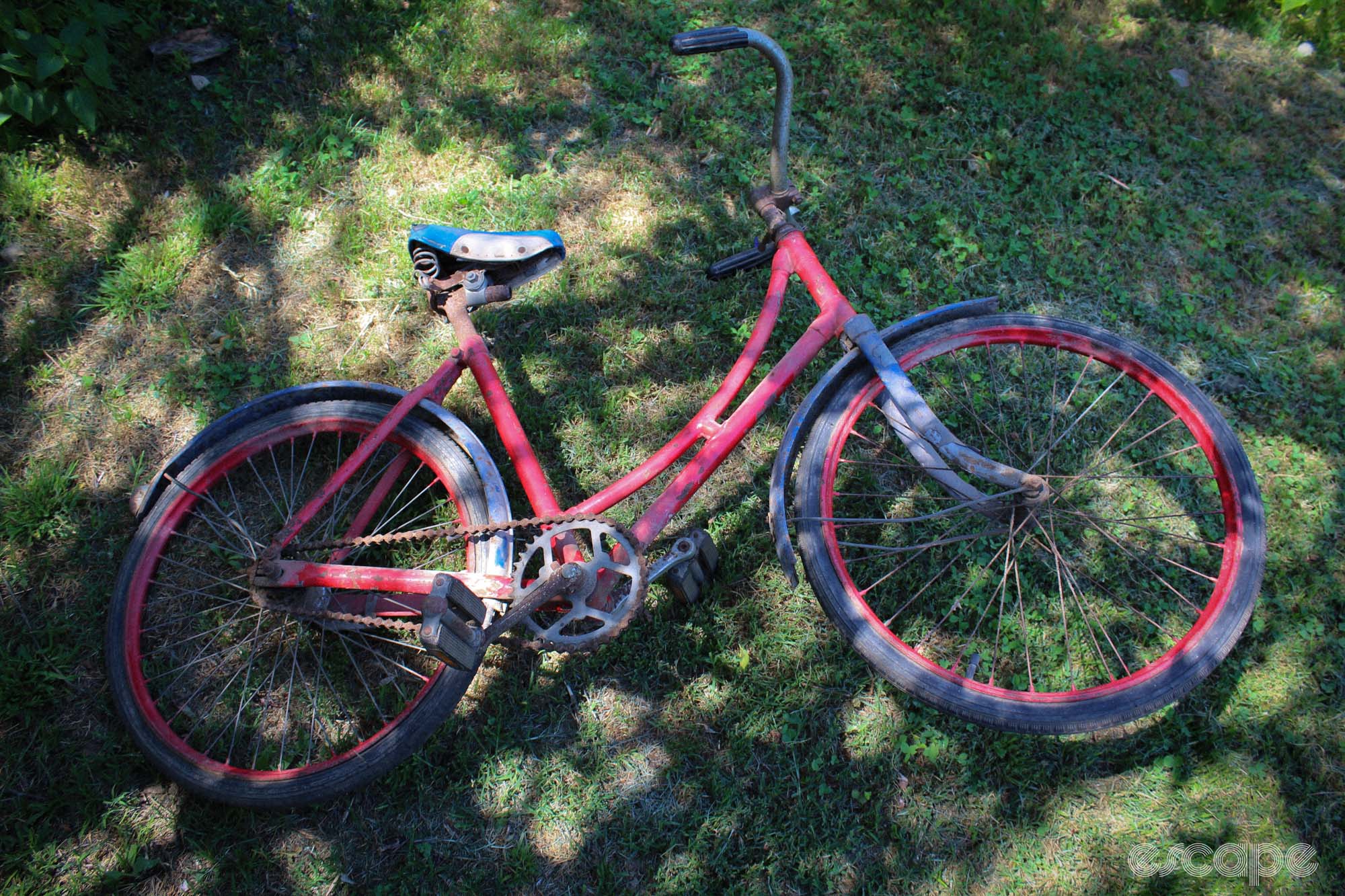
There’s a cycling thread running through the family, and we can go further back than that Christmas. Grandma’s first bike – my first bike – was built in the 1940s, but you can follow metaphorical tyre tracks way back to the late 1800s. That was when my great-great-great grandfather, a German settler called August Wagener, was roaming South Australia on a penny farthing.
Despite being a keen cyclist, he seems to have passed into family folklore as a bit of a bastard. Perhaps some of that is unaddressed trauma, although I doubt they talked about it in those terms in the 1800s. Before dying in 1899 at 48 years old, he fathered 14 children; a genealogy website notes that ‘most died in infancy,’ the last four in a row before their second birthday. I cannot imagine how you would ever begin to process a burden of grief that heavy. August’s answer was violence.
In the middle of that rollcall of children living and dead was William (b. 1881), my great-great grandfather, who ran away from the abuses of his father at 12, found his way from Adelaide to Fremantle, ended up down the mines in Broken Hill, and was long presumed dead by the family that he’d left behind. By the time he returned to Adelaide in adulthood he startled his siblings on a couple of fronts: firstly by being alive, and secondly by looking half-dead, sickly and wasted from years working in the dark and the dust. He was illiterate but had an entrepreneurial spark – “he looked at things, and worked out how to do it,” as my Grandma put it.
Among the things he worked out how to do was build houses – including the old family home in Sellicks Beach where I spent a childhood of summers – and bicycles. There were a string of businesses: a wrecking yard, with Model T Fords perched in the trees at the front as a kind of crude ceremonial arc; an engineering works on Glen Osmond Road behind the family home; a shop in the centre of the city. But the most relevant business venture for our purposes here is his bike shop on Norwood Parade – a place where he brazed and built sturdy utilitarian machines for a lifetime of riding. Bikes built for purpose, not pace; my Grandma remembers him one day talking dismissively of “head down, arse in the air” racing bikes, and turning his nose up at modern contraptions like freewheels and gears, which “he didn’t believe in.”
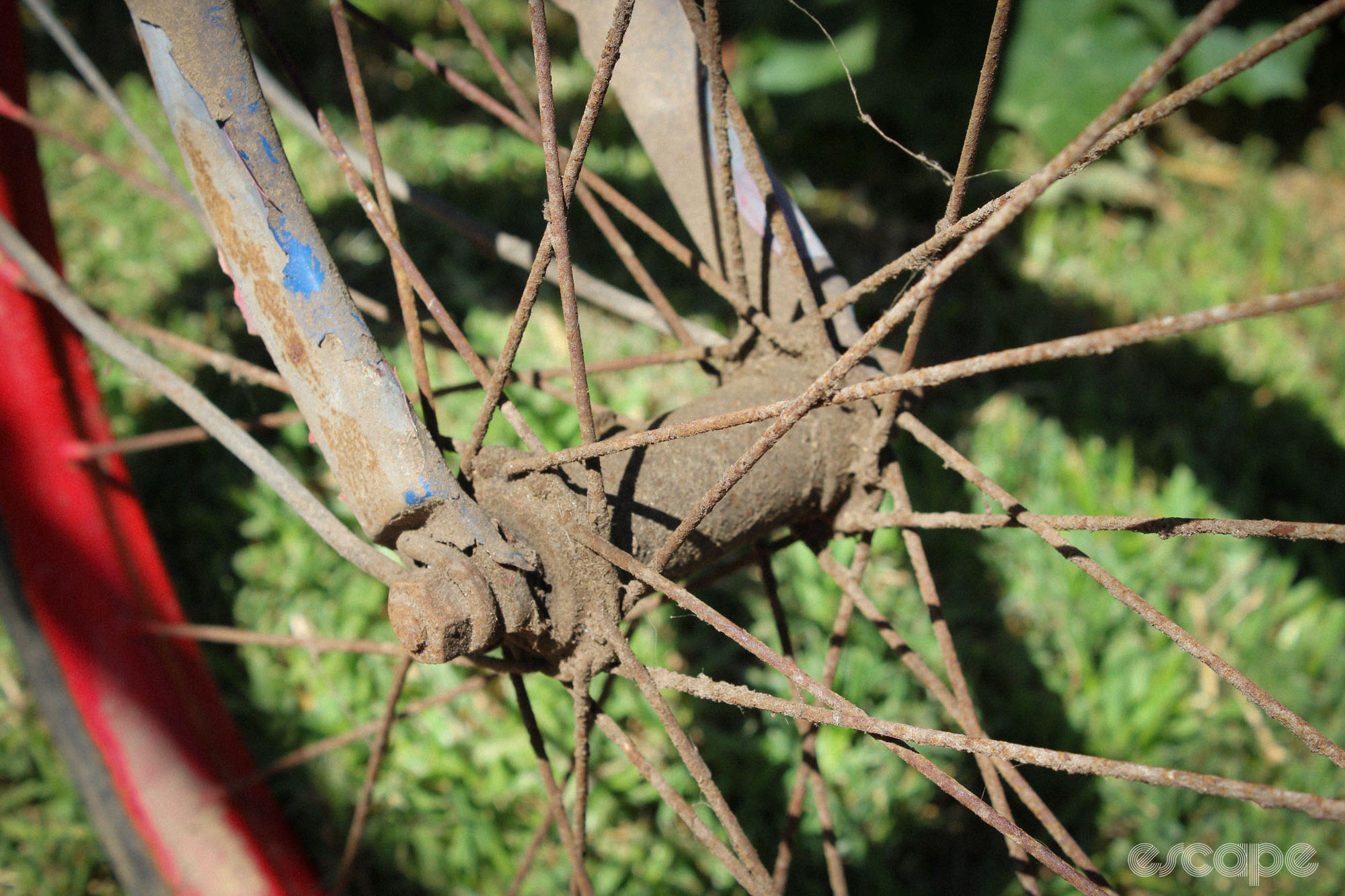
One day, a little bike – a graceful step-through girls’ bike – appeared in the shopfront. It was a surprise “hiding in full view,” Grandma told me. “I saw it in the window and I thought, ‘Ooh, I’d like a bike like that.’” It was painted in a thick, lustrous burgundy enamel, as were the rims, and on the downtube was William Wagener’s brandname: Blue Bell. That Christmas, that lovingly handcrafted bike was given to Grandma.
It was the early 1940s – Grandma’s not sure of the year – but war was on Australia’s doorstep. The presumption was that Adelaide might eventually be occupied, caught in a sweep down the centre of the country; Japanese forays into Sydney Harbour and Darwin and a closing noose through the South Pacific spurred enlistments and rationing. That had a flow-on effect for a certain grandfather trying to handcraft a bike for his granddaughter – production of kid-sized wheels ground to a halt, so he had to improvise, cutting down rims and hoping the spoke holes lined up when it came to lacing it to the hubs. That’s a detail that comes up often when I talk to family members about the bike: the improvised ingenuity needed to get it all those mechanical parts to work under trying circumstances. “The whole family talked about it, and all that he’d done to make it for me,” Grandma recalled wistfully. “It was a significant thing in my childhood – in my life.”
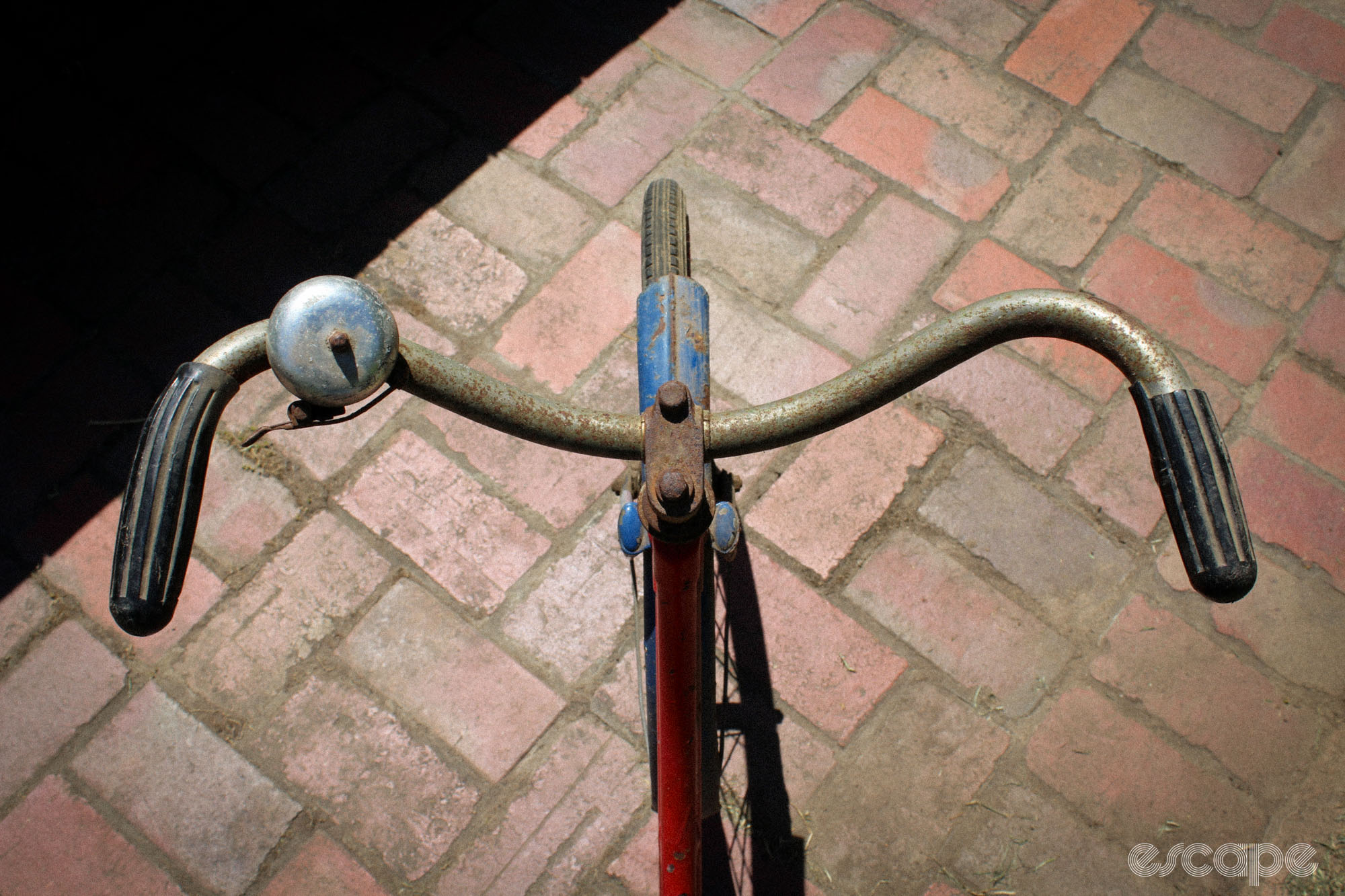
Despite the looming threat of war, the 1940s were in some ways a more carefree time; one in which a little girl could “go everywhere on that bike… I roamed very freely on it.” Grandma learnt to ride on the bike – “Daddy used to hold my saddle,” she remembers – before she mastered balance, mastered the fixed-wheel, mastered childhood independence. My daughter now is about the same age as my Grandma was then – on a more modern bike with frivolities like “brakes” – but although I’m no helicopter parent I can’t imagine letting her roam too far without supervision. I wish I could be as brave as my Grandma was as a little kid.
As first bikes often do, Grandma’s Blue Bell spurred a passion for cycling that lasted long after she’d grown out of it. The bike was, she thinks, passed down to her two younger sisters. The youngest of them would have learned to ride without a father’s steadying hand on the saddle after his sudden death at 48; my Grandma, the eldest, was just 15.
In the wake of that tragedy, her bike-building grandfather – stoic, pragmatic – took on an increasingly significant role in keeping the family afloat in what Grandma describes as a working-class area, without a lot of spare cash. “He was an absolutely remarkable man,” Grandma said. He’d stop by with eggs, fish, rabbits; he’d help maintain his grieving daughter’s family home. “He wasn’t very good at emotion, so that was how he showed his love and support.”
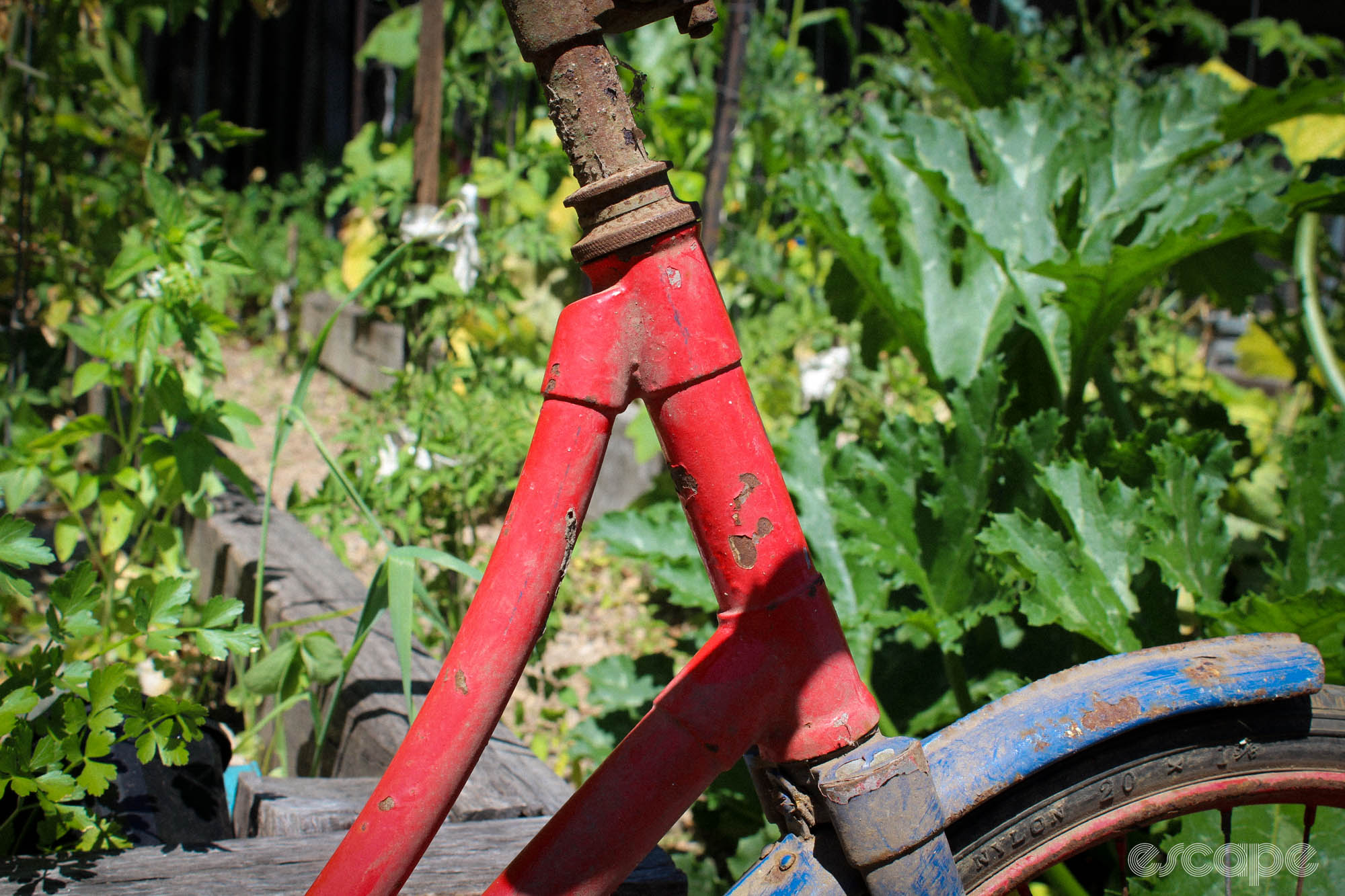
Another way was through his bikes. The Blue Bell brand doesn’t exist anymore, and Grandma doesn’t remember a headtube badge or anything much beyond the brand name, but there are traces of them on the internet in digitised old newspapers. The business stayed afloat for a long time, though: through all of Grandma’s childhood and much of her adulthood. It was still there when he walked her down the aisle to get married to my grandfather. She remembers how this man of few words squeezed her hand as he gave her away, how “that meant a great deal” to her. William Wagener was still building bikes into his 80s, Grandma remembers, and “when he couldn’t work anymore he couldn’t see the point in life, turned his face to the wall and died.”
The bike he’d built for my Grandma is a link to the past, but it’s also a conduit to the future. It’s a link to the other “significant bikes” she owned after it, including a stylish black Raleigh she rode around Adelaide as a young adult, and to bikes she rode during stints living in Sweden and Cambridge with a growing brood of children, moving with her academic husband, my grandfather. The little burgundy Blue Bell moved to Melbourne when they did; as my grandmother learnt to ride on it, so did my father, his two sisters and his brother, Stephen. It evolved as it was ridden by a new generation; a kick-back brake and a freewheel was installed in the 1960s by my grandfather, and he’d help the kids learn to ride just as my Grandma’s dad had helped her.

Time and tragedy moves in circles. I never met my grandfather – he died suddenly at 47, about the same age my Grandma’s dad had been, about the same age my great-great-grandfather’s dad was, all from heart problems. I’m told I would have liked him, though. When I look at old black and white pictures he looks a bit like my dad, my uncle, and my brother.
Grandma began splitting her time between Adelaide and Melbourne, eventually remarrying, and her old bike stayed in storage in her Melbourne house the whole while, waiting for its next generation. My parents met and married, and my brother followed, then me. With a combination of nostalgia and frugality, the Blue Bell was pulled out from under the house and repainted by my dad. It used to have a Brooks saddle, he told me, but after 50 years under at least six pairs of small buttocks it needed replacing. New tyres, new grips, but shamefully, still not a new-enough bike to impress me, an ungrateful six year old.
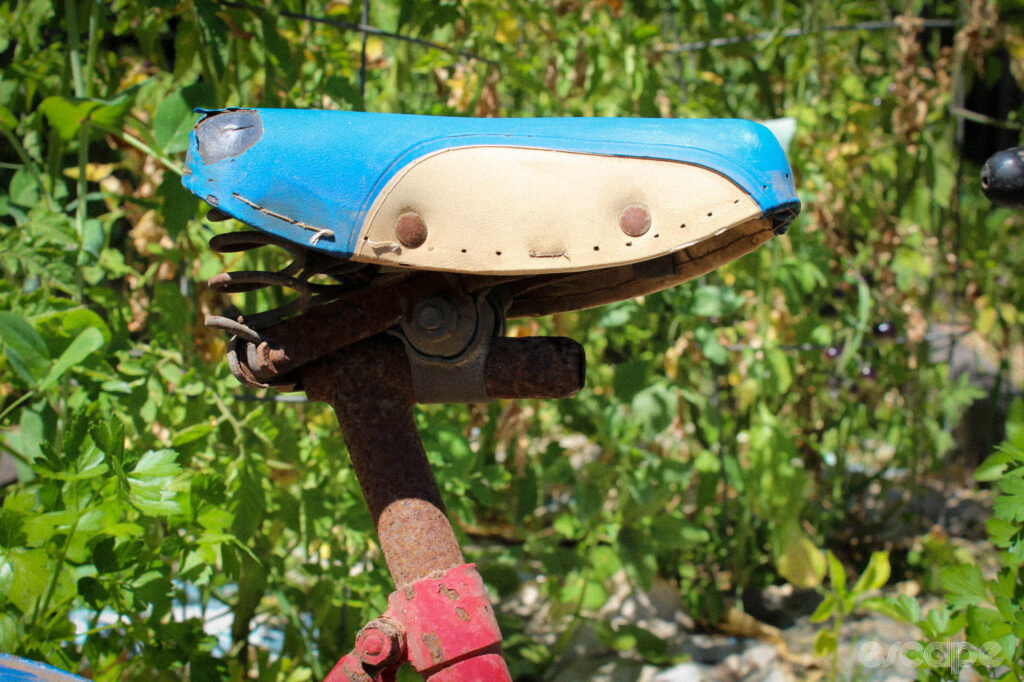
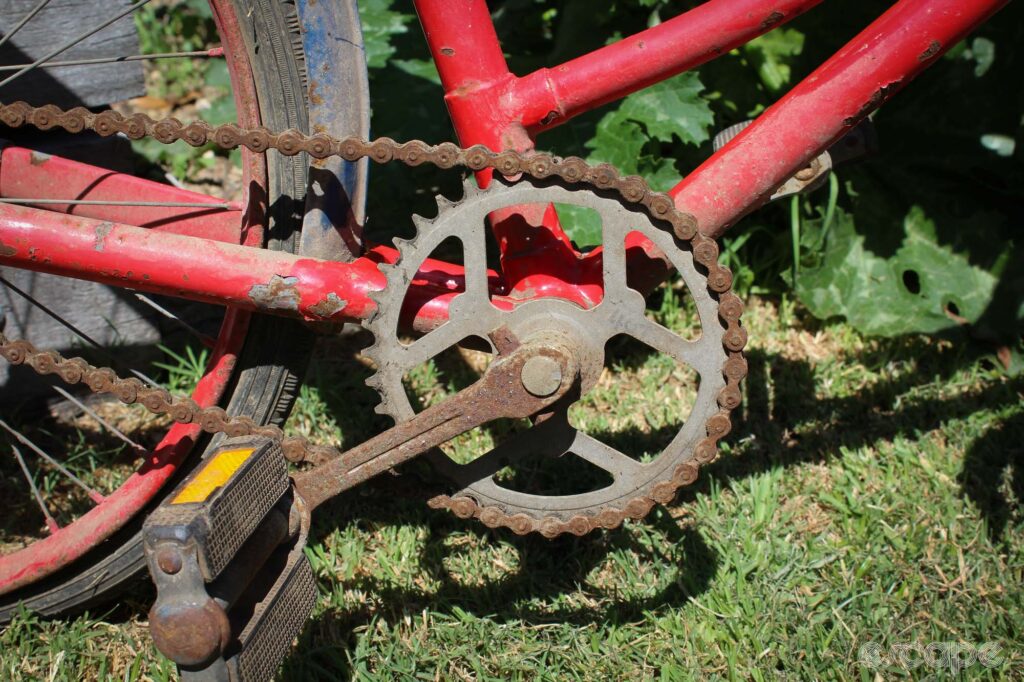
It did spark something in me, though. From as early as I could ride, I loved it – the joy of carving a bike around a corner, the quiet magic of balancing on two spinning wheels. By the end of primary school, I was glued to nightly Tour de France highlight shows on SBS, making home-made ONCE jerseys with felt-tip markers. By high school, bikes had become a physical escape. By the time I was at uni, they were a profession. All these years on, I’ve never really stopped being awed by what bikes can do and where they can take me.
I’d always assumed that Grandma’s appreciation for the sport of pro cycling came from all the time she’d spent in France with her second husband. We’d talk on the phone after big stages of the Tour, and she’d often return from France with cycling-themed gifts for me; an FDJ jersey, a cap from a local club team. I learned recently that I’d got that assumption about her cycling fandom wrong: “I took up an interest in the Tour and in cycling because you were very interested, and I wanted to have an interest to share with you,” she told me, rendering me a bit speechless. “It was nice that it coincided with my interest in France – but that came later.”

She’s a lifetime member of this website, shares travel tips when I go over to the Tour de France, and sometimes sends slightly cryptic text messages while I’m over there which makes me suspect that she’s found a way – despite feeling increasingly outpaced by technology – to listen to our podcasts. She’s bound up in my love of bikes, whether she realises it or not; it’s only now that I realise that the starting point of that love began many decades before I was even born.
Grandma hasn’t ridden for several years – a bout of Covid wrecked her balance and shrunk her radius around her. But I can relate to how she reminisces about riding, the way she conceptualises the joy it brought: “I used to ride by the contours – I knew every gradient around,” she said. “I like the sensation of riding a bike – it feels like freedom. And I like the air in my face.”
Do you miss it, Grandma? “Yeah, I do.” She pauses for a moment on the other end of the line. “I think riding a bike is something I can’t do anymore. But when I did, I loved riding a bike.”
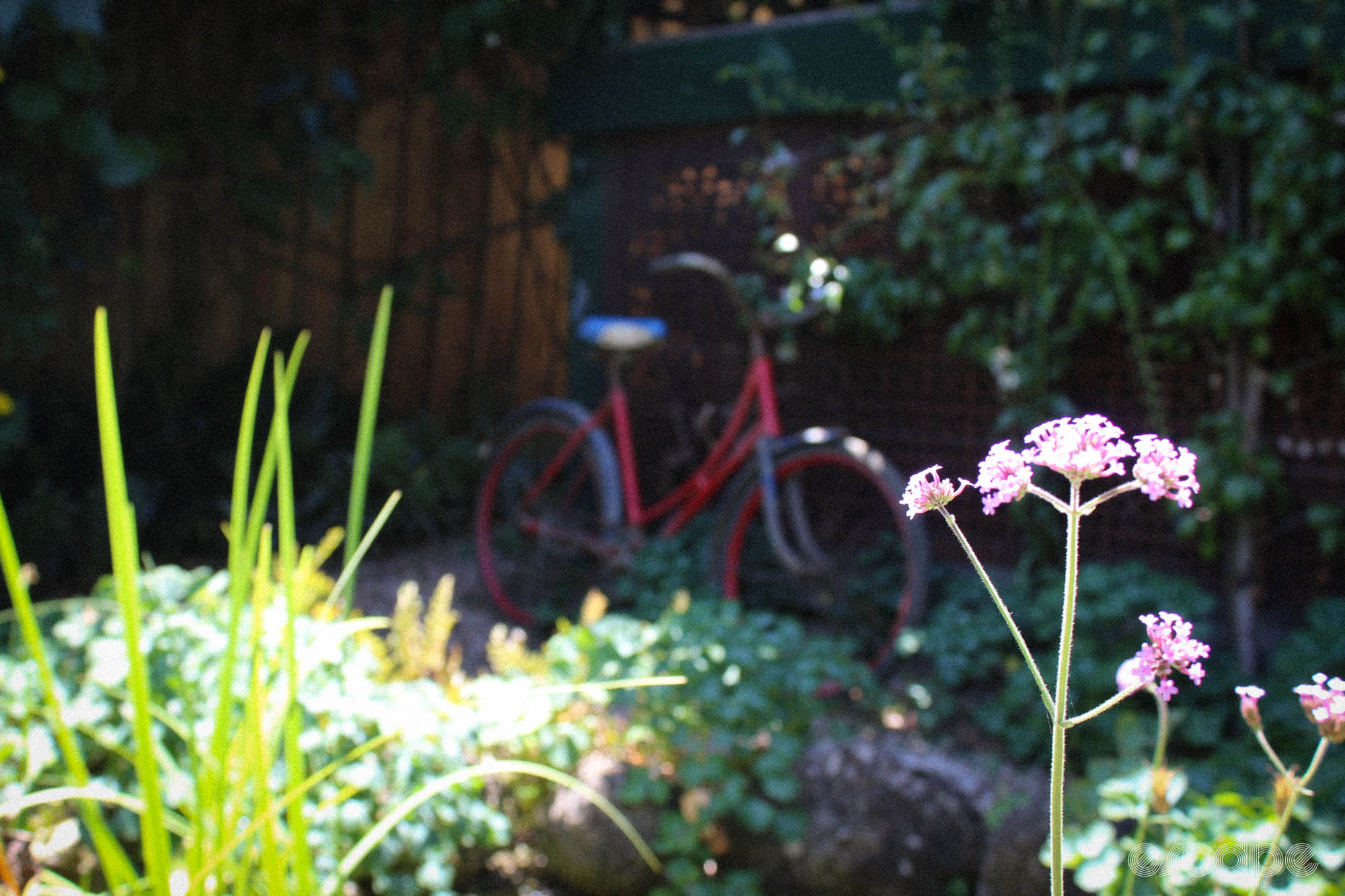
On a scorching hot day in Melbourne’s late-summer sting, my dad pulled Grandma’s old bike out from under the house for me to photograph. It was smaller than I’d remembered, but the shape was familiar. As I leaned it against garden beds and squinted at it through the viewfinder, I focused on the details: a coaster-brake I’d stomped down on 30 years ago to make it skid; the speckles of rust where the red paint had flaked away. With a new set of tyres, it’d be rideable, maybe. I thought of how it looked now, 80+ years after it was built by an illiterate ex-miner in Adelaide and given to one of the people I love the most, when she was about the age my daughter is now. I thought of how it looked to my Grandma then: “Very elegant – I felt then and I have felt since that it was a very special bike.” I thought of how learning the story of that bike has given a new lens through which to view those tubes of ancient steel, and the many generations that had a hand in its past.
“I was so proud of it,” Grandma told me, and I can hear a nostalgic smile in her voice. I wish I’d been prouder of that little red bike as a child, the way that I am now.

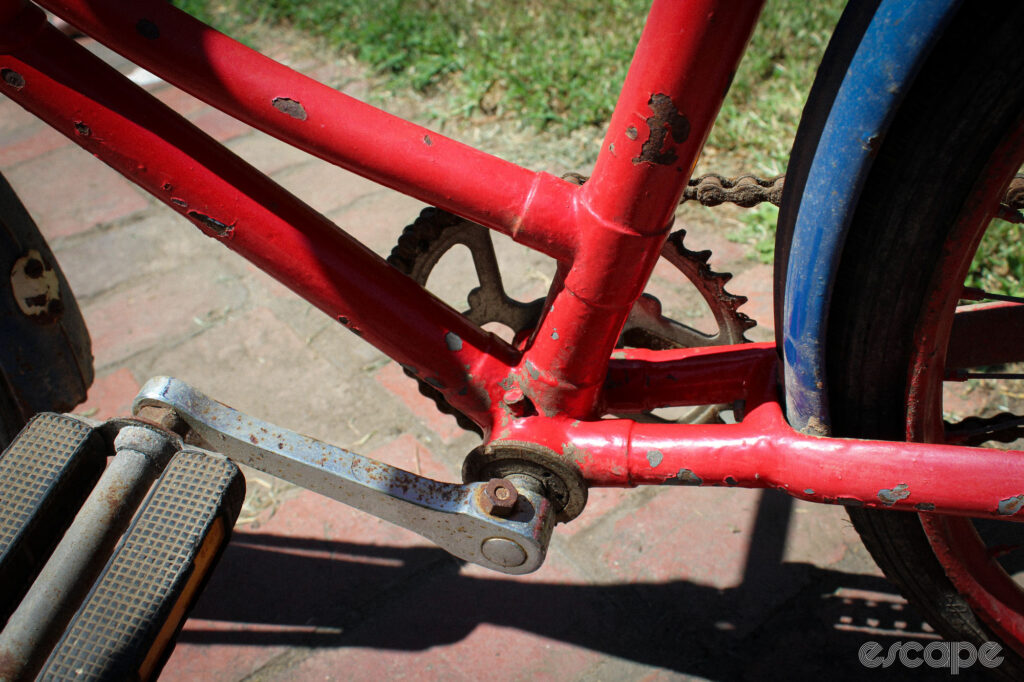

What did you think of this story?
